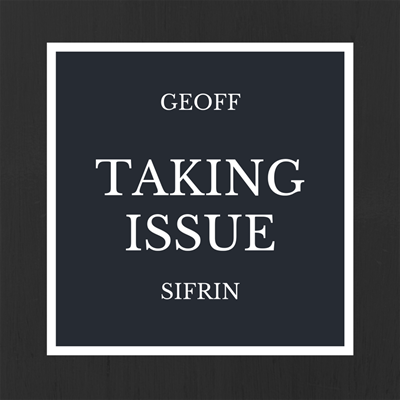
Banner

Would the real journalist please stand up
GEOFF SIFRIN
It’s tough to hold up high standards in journalism today, when fake news is everywhere and the onslaught of mediocrity and mob rule through social media has so shaken the industry. A story in the Israeli online paper Ynet reports that only 26 per cent of Jewish Israelis have faith in the press, according an Israel Democracy Institute survey. This probably reflects low regard for the media today in many other places.
Both of the above cases relate to highly charged political contexts – the Israeli-Palestinian conflict and racism in South Africa – which should make editors doubly concerned with journalistic credibility.
Sunday’s NYT op-ed by Palestinian Marwan Barghouti, criticised Israel and justified a mass hunger strike which he had organised by Palestinians jailed for security-related offences. It is perfectly appropriate to publish such a piece, it is part of the debate on the issues, and Barghouti is an important figure in Palestinian politics – some people have described him as a Palestinian “Mandela”.
However, the op-ed’s tagline described Barghouti as a “parliamentarian and leader” without mentioning that he was in an Israeli jail after being sentenced by an Israeli court to five life terms for murder and terrorism.
After an outcry, NYT’s public editor responsible for monitoring its journalistic integrity, on Tuesday criticised the op-ed department, saying “skimping” on key background information on opinion writers – Barghouti’s terror activities in this case – discredits it.
Papers need to “fully identify the biography and credentials of authors, especially details that help people make judgements about the opinions they’re reading”. Failure to do so suggests an inappropriate agenda.
Outraged Israeli officials said the way the paper referred to Barghouti was akin to calling murderous Syrian President Bashar Assad an eye doctor, because he had studied medicine.
The NYT admitted its mistake. An online clarification on Tuesday said the article had “…neglected to provide sufficient context by stating the offenses of which he was convicted….”
In the South African case, the HuffPost ran the anti-white racist blog from one “Shelley Garland” without being rigorous about determining who she was. It later turned out she didn’t exist; it was a race hoax performed by a person who described himself as a white man in Johannesburg which HuffPost had fallen for.
The story went viral internationally when American right-wing papers spread it on social media to illustrate their view that people of colour posed a threat to white people.
The HuffPost editor initially defended the posting of the piece, but later removed it and admitted she didn’t know who Shelley Garland was and had not done sufficient checks to determine this.
It might be some consolation to the HuffPost’s editors that they are at least in good company with the NYT, when that illustrious paper also neglects journalistic obligations for which it is criticised. An editor’s job is a hard one and all papers sometimes make mistakes.
But that should not comfort them. Freedom of speech is essential and they can defend it in those terms, but in the current volatile environment, allowing a racist post onto a news and opinion website which proposes denying white men the franchise, detracts from the seriousness of their platform, and suggests a political agenda. Would they have run the story if the headline had suggested that blacks, for instance, should be denied the vote for 20 years?
Read Geoff Sifrin’s regular columns on his blog sifrintakingissue.wordpress.com





Choni
April 20, 2017 at 4:22 pm
‘In a previous article Sifrin was in favour of releasing the terrorist murderer so that he and Netenyahu can negotiate a peace treaty.’